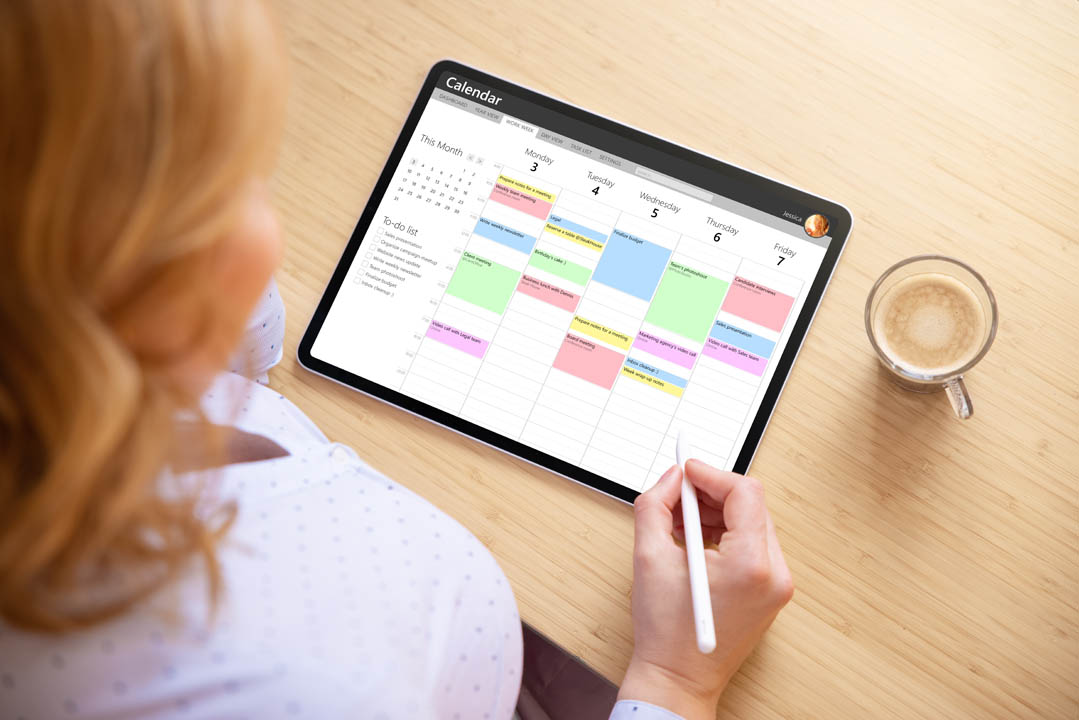One thing success-focused apparel decoration professionals are really good at is doing all the stuff. That is one of the reasons you’ve been as successful as you have been in your career.
As your success increases and the scope of your responsibilities and business increases, your relationship with time and how you manage it has to evolve. After a certain point, there simply is no more time left on the calendar for you to use. Before you know it, it feels like you are running from crisis to crisis. Every day, you find yourself saying, “I just have to make it past this one insane deadline, and then things will calm down.” Only it never really does.
Here are some tips to keep out of the “busy for nothing” trap:
Do what’s important
Productive people master the skill of identifying what is important and necessary. They make the most important things a priority over the things that can either wait or that do not have a deadline. When you spend time on the crucial but not critical, you will miss deadlines. You won’t reach your goals. Time spent putting out fires is time spent focusing on the urgent, and not focusing on the important. An example is being active on social media randomly. This is definitely not contributing to your business productivity. Intentionally creating and posting social media posts about your business is very different than endlessly scrolling through the feed.
Build ‘blank space’ into your calendar on a daily basis
Are you so busy that you don’t have time to sit down for five minutes and do nothing? Even successful people who are running multiple businesses aren’t that busy. It is more likely that you are just not very organized. There’s a vast difference in the mental processing of a person who is consistently ahead of deadlines and someone who is perpetually late.
Blank space is unscheduled time, as in completely unscheduled. No appointments, no work, no nothing. When that blank space comes up on your calendar, grab a coffee, water, or your beverage of choice, and just sit for those 5-10-15 minutes. Take a beat, just for those few moments, and notice what you draws you forward. Even if the draw you feel is to close the door, and close your eyes for a few minutes, do it. If you feel like doodling, do it. If you feel like going online to check the scores, do it. If you feel like going outside, do it.
Silence your phone and set a timer. Give yourself that entire time to just do you. These little mental pauses will help you recharge, gain clarity, and possibly even figure out something that has been bugging you.
Find your organizational strategy
Productive people have a solid organizational strategy. The secret is finding the methods, techniques, and tools that work best for you. Some effective strategies are:
Create a daily focused to-do list. It should have no more than three “most important tasks” for that day.
Use to-do list apps to organize, track, and share the never-ending lists of the minutia, things we need to do in this thing we call life, like stopping at the store for milk and dog food on the way home.
Automate recurring tasks. Simplify and systematize basic tasks like social media updates. Create canned email responses to general inquiries. Create a complete FAQ page to handle the basic questions and improve your customer service. Use tools that send out invoices and reminder invoices when they are not paid.
If you create social media content for your business, use an editorial calendar and template. It will keep your company’s marketing goals on track.
In the kitchen, a chef has a system called “mise en place.” This is a strategy chefs use to arrange all of their ingredients and tools before cooking. This prep work helps account for their time, prevents looking for misplaced items, and helps them concentrate. Apply this same strategy to your production workflow. Before a job goes on the equipment, have the design, colors, products, and post-production details all pulled together.
Build in buffers
As the business grows, it is all too easy to cram your production schedule with back-to-back orders, and cram your calendar with meetings and appointments. Resist the urge. Build in “buffers” so when (you know this is a when, not an if) something runs long, you don’t mess up the schedule for the entire day or week, sending yourself into overdrive and your staff into hyper mode. This is when many mistakes happen.
Adding buffers into the production schedule is a practical and effective way to keep your quality level high while still hitting your deadlines consistently. Adding buffers into your calendar gives you time to note important details after a call or a meeting, even though you are certain that you will remember it all. It allows you to not run late to meetings. It makes it possible for you to stop and fill up your gas tank on the way or deliver an order on that side of town between your appointments instead of making another trip.
Maximize ‘lost time’
Lost time is the time you spend doing necessary, unavoidable things yet these tasks do not require your highest level of thinking. Examples of lost time are delivering orders, driving to and from work, walking the dog, yard work, housework, putting away laundry, waiting at the doctor or dentist, waiting in line to pick up kids at school.
Listen to a podcast, pull up the recordings of that course you signed up for, or tune in to an inspirational speaker you admire. Your subconscious will absorb more than you expect. At the very least, you’ll know whether or not that topic needs to get more time on your calendar.
If listening to something that you would describe as “professional development” does not appeal to you, listen to your favorite music, an audiobook, or even meditative sounds (not while driving, please). Giving your brain something new or different to engage with is an excellent strategy to help you stay sharp, focused, and productive when you are working.
Practice the 3 D’s of fulfillment
Yes, there will always be things that have to happen even though they don’t light you up. That’s where the 3 D’s come in:
Delete: Don’t do the thing and see what happens. It may not be as important as you thought. If there are no big consequences, you now know that is a hard pass the next time it comes up.
Delegate: A hand-off is not a pawn-off. Find somebody who wants to do that thing you don’t. What skill sets are available to you within your staff? Is there someone who is always on social media? See if they would be willing to take over monitoring your socials, perhaps even posting for the business. Just make sure their tone is suitable for the business.
Dilute: Find a way to make the thing you don’t like faster, easier, or more interesting. You don’t have to love it, but you certainly can make it more tolerable. Put on some fun music and dance around the business as you sweep up, or have a contest to see who is the most accurate parking the forklift at the end of the day.
Be honest with yourself
At the end of the day, if you feel like you had an incredibly busy day, yet it was one without any rhyme or reason, pay attention. Or, did the work you accomplished today bring you closer to your goals? Create a daily ritual to assess the day before you call it quits. Asking yourself these specific questions about your productivity will help you put your work in perspective. You’ll be more able to differentiate between what’s a priority and what’s not. Questioning yourself will allow you to think about what went well with your day and what didn’t. With these insights, you can make adjustments going forward.
Being busy is not the metric by which you want to measure your success or the quality of your days. Being able to enjoy your life daily, being productive, and because of these two things, being profitable, these are the metrics that will lead to a life well lived. As you read these tips, did you want to argue back with me at any point? I would love to hear from you, Jennifer@nnep.com. Bring on your “Yes, buts” and your suggestions. GP




